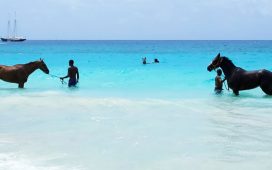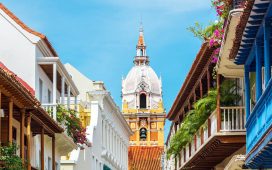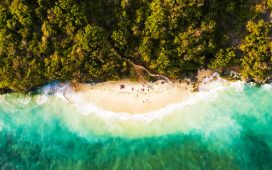Introduction
Cradled in the heart of Micronesia, Palau is a sanctuary of sapphire seas, emerald isles, and untouched beauty. This remote Pacific archipelago, composed of more than 500 islands, is often described as one of the world’s last pure paradises—a realm where nature reigns supreme and the ocean tells ancient stories through its depths. Travelers arrive not for luxury alone, but for connection: with coral gardens, with ancient culture, and with the delicate balance that sustains this marine wonderland.
Each island seems suspended between sea and sky, framed by lagoons of translucent blue. In Palau, time slows, horizons expand, and the world feels reborn with every tide. The journey here is not just physical—it’s spiritual, revealing how the smallest islands can hold the grandest sense of peace.
History & Heritage
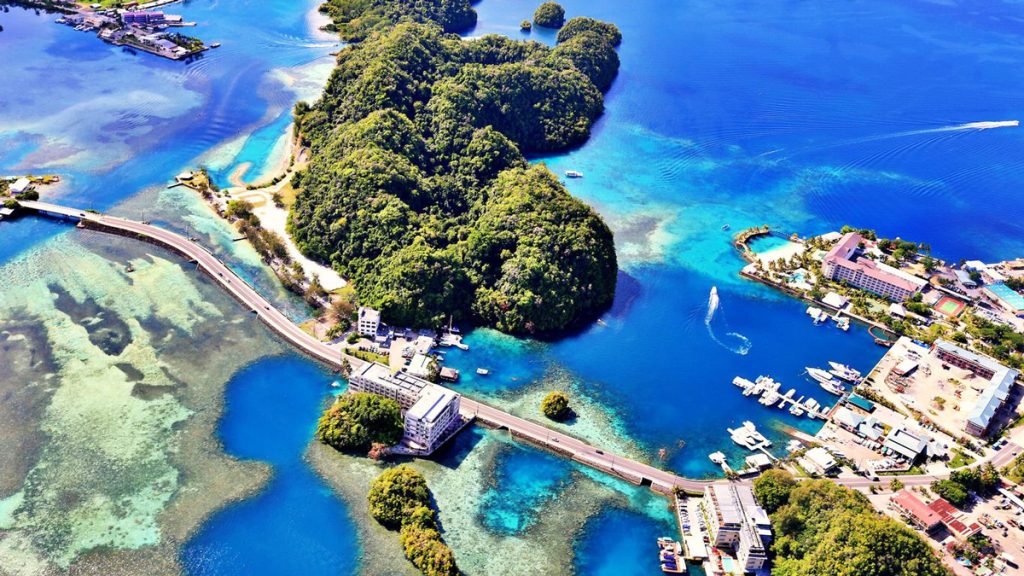
Palau’s story stretches back over 3,000 years, shaped by seafaring Micronesian settlers who lived in harmony with the ocean’s rhythm. The nation’s traditions are deeply anchored in respect for land, sea, and community, where stories and symbols pass from one generation to the next.
Colonial influences—from Spain, Germany, Japan, and the United States—each left their mark, but Palau maintained a distinct identity rooted in clan traditions and matrilineal governance. Ancient legends continue to guide modern life, woven into art, dance, and oral storytelling. Visitors can still find traces of the old ways in village bai meeting houses, where symbolic carvings depict creation myths and the wisdom of ancestors. Palau’s independence in 1994 cemented its identity as a sovereign nation that balances progress with profound cultural respect.
Landmarks & Architecture
Palau’s landmarks are subtle yet deeply meaningful, blending natural beauty with cultural and historical memory. The islands’ most significant sites are not defined by height or grandeur, but by harmony—places where human hands meet the artistry of nature.

- Belau National Museum – The oldest museum in Micronesia, showcasing Palauan history, art, and cultural relics.
- Bai ra Mengellang – A traditional men’s meeting house in Koror, hand-painted with symbolic motifs representing Palauan mythology.
- Ngardmau Waterfall – The tallest waterfall in Micronesia, cascading through lush rainforest.
- Stone Monoliths of Babeldaob – Mysterious basalt pillars carved centuries ago, standing as ancient sentinels on the island’s grassy hills.
Palau’s architectural character lies in its harmony with nature—structures built low, open, and fluid with the environment. Even modern buildings mirror this ethos, drawing from bamboo, thatch, and coral limestone to honor the island’s enduring aesthetic of simplicity and sustainability.
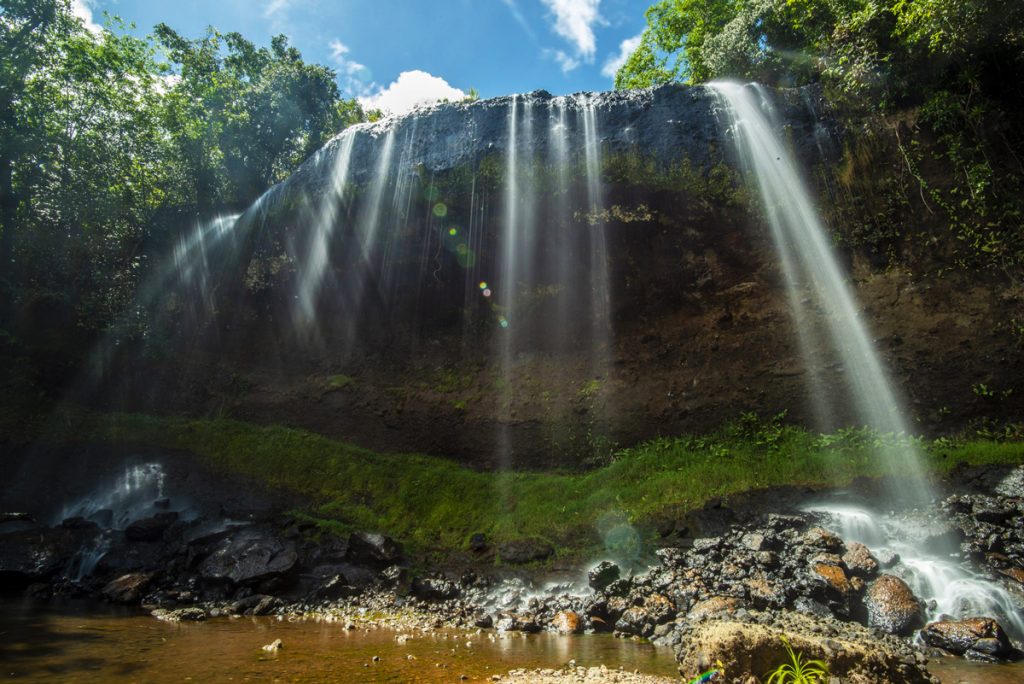
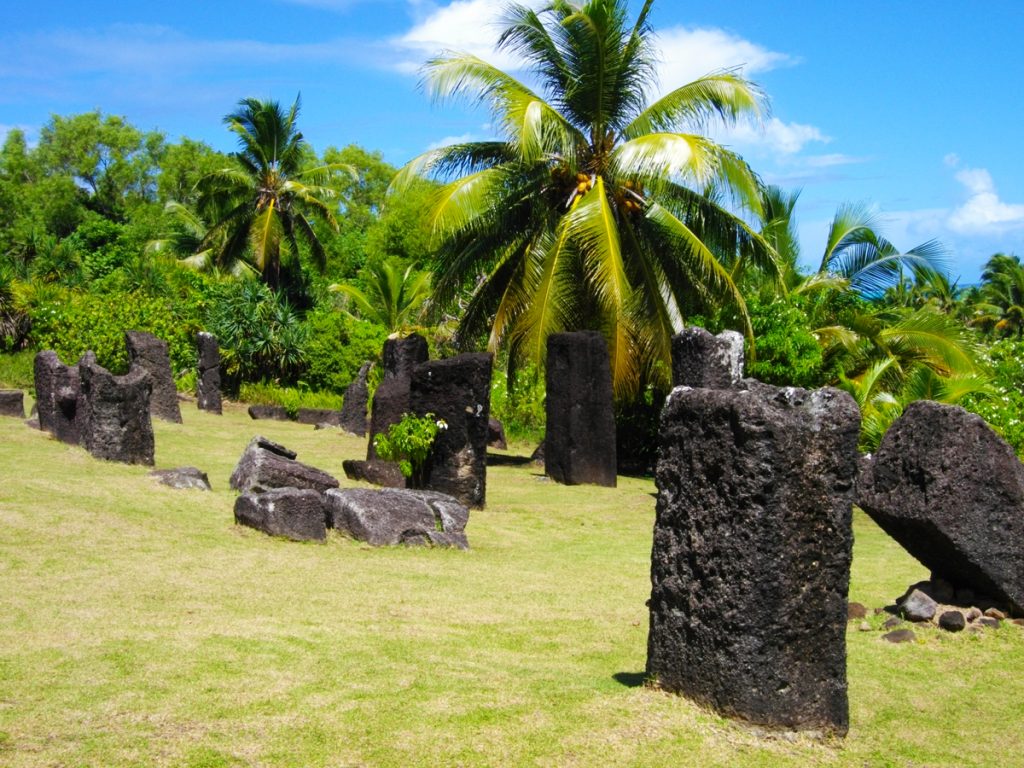
Museums & Culture
Palau’s cultural landscape is small in scale but immense in depth. Its museums and galleries serve as keepers of identity, preserving ancestral knowledge and artistic legacy while connecting it to a rapidly modernizing world.
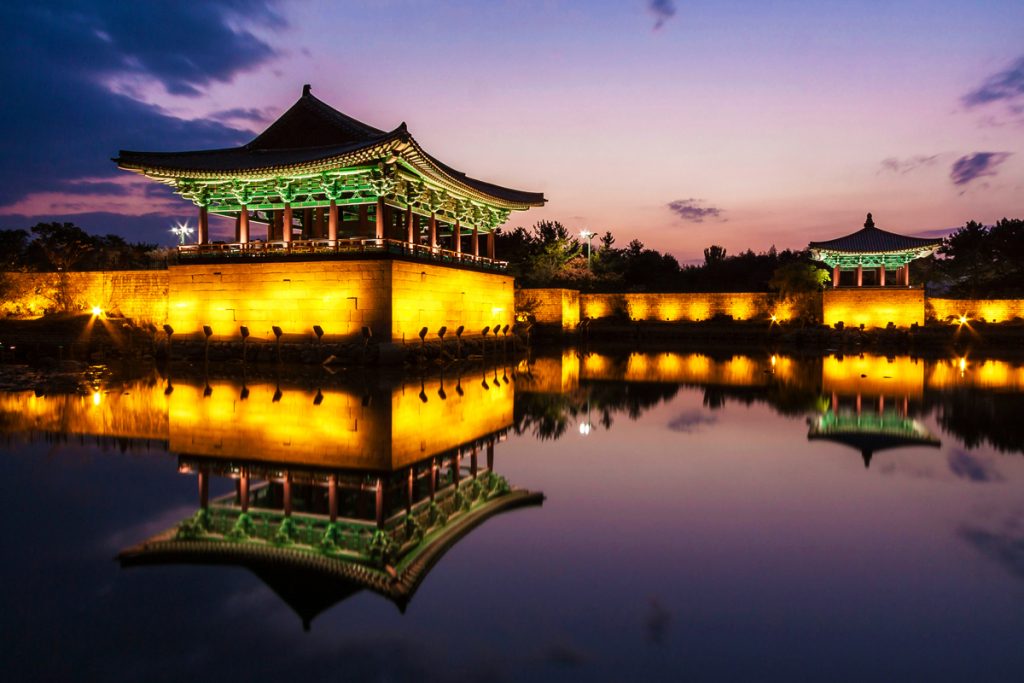
- Etpison Museum – Founded by a former president, it offers insight into Palau’s evolution from ancient tradition to modern sovereignty.
- Cultural Night Shows in Koror – A chance to witness traditional dances, chants, and costumes passed down through generations.
- Traditional Canoe Building Workshops – Experience the artistry of Palauan navigation, where master builders carve outrigger canoes using ancestral methods.
Cultural pride runs deep in Palau, and visitors are encouraged to engage with the island’s artists, weavers, and storytellers. Each creation—whether a wood carving or a chant—is an act of memory, a living echo of a culture fiercely protective of its roots.
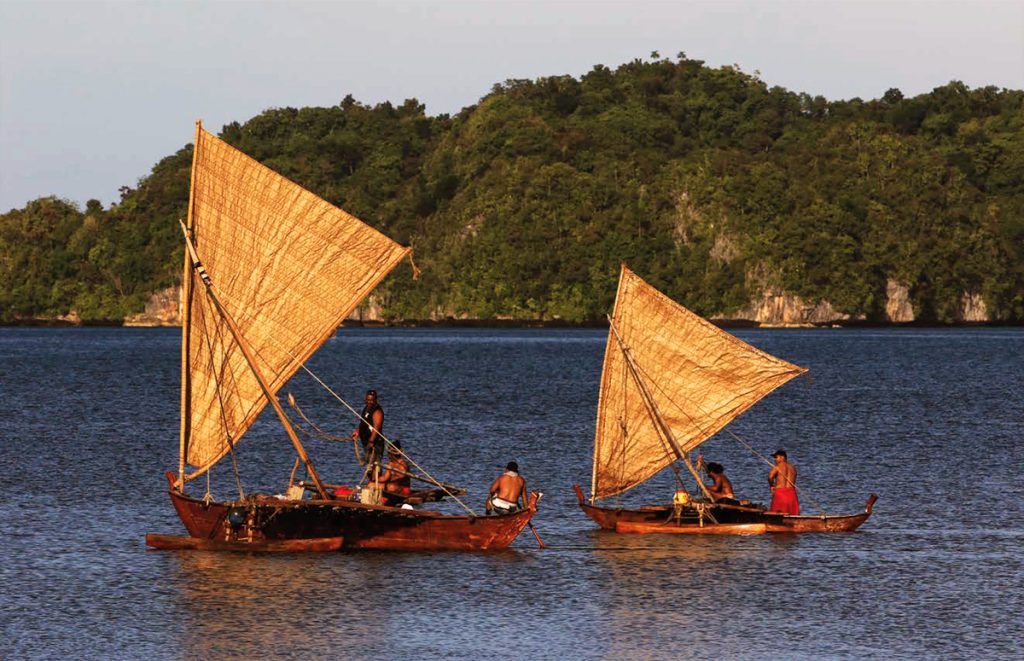
Hidden Gems
Palau’s hidden corners invite curiosity and calm—secret coves, forgotten WWII relics, and lagoons that shimmer like liquid glass. These secluded places feel almost otherworldly, rewarding those who venture beyond the main islands with quiet wonder.
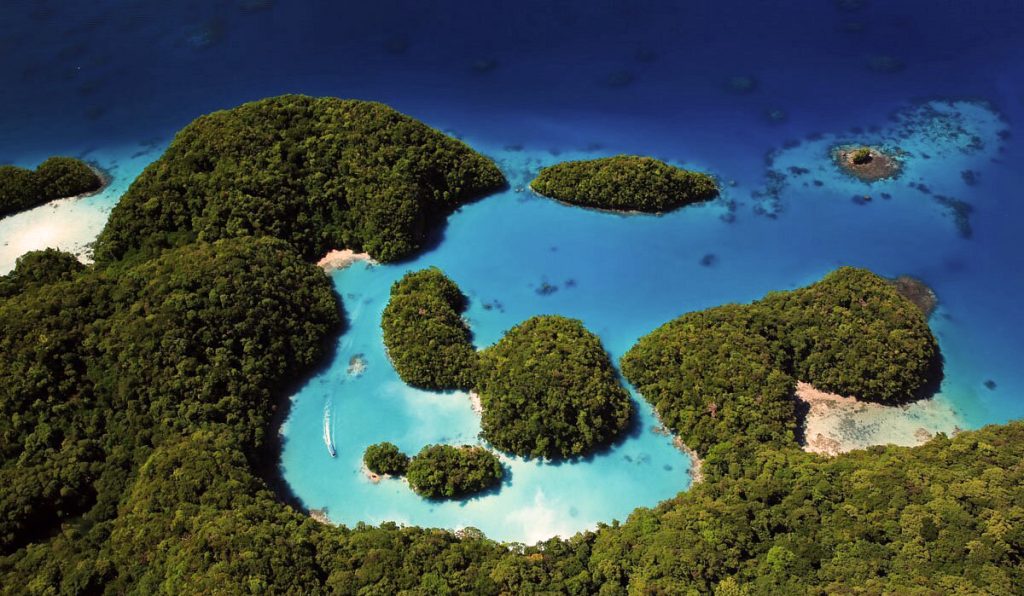
- Milky Way Lagoon – A natural spa of white limestone mud said to rejuvenate the skin.
- Jellyfish Lake – A surreal experience where visitors can swim among millions of golden, stingless jellyfish—a phenomenon unique to Palau.
- Kayangel Atoll – A pristine, barely-inhabited atoll where turquoise waters meet unspoiled reefs.
- Ulong Channel – A diver’s paradise known for exhilarating drift dives among sharks and coral canyons.
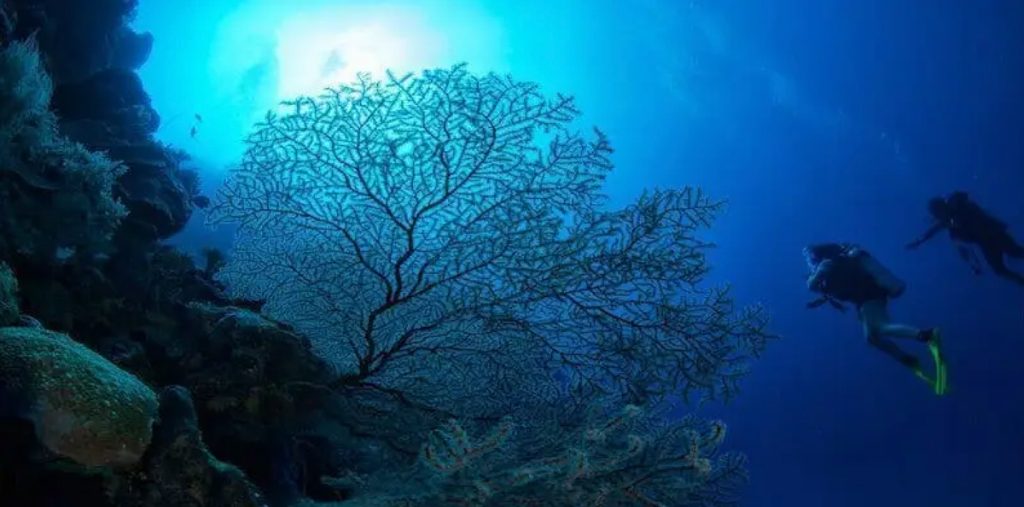

Spotlight: Jellyfish Lake – Palau’s Living Wonder

Few places on Earth capture the imagination like Jellyfish Lake. Hidden among the Rock Islands, this glowing lagoon feels like another planet—silent, surreal, and alive with gentle golden forms drifting through the water.Among Palau’s many marvels, Jellyfish Lake stands apart—a natural phenomenon found nowhere else. Once isolated from the ocean, the lake evolved into a closed ecosystem where golden jellyfish lost their sting through generations of peaceful evolution. As you glide through its warm, translucent waters, surrounded by pulsating light and silence, the experience feels almost spiritual—a meditation suspended between sea and sky.
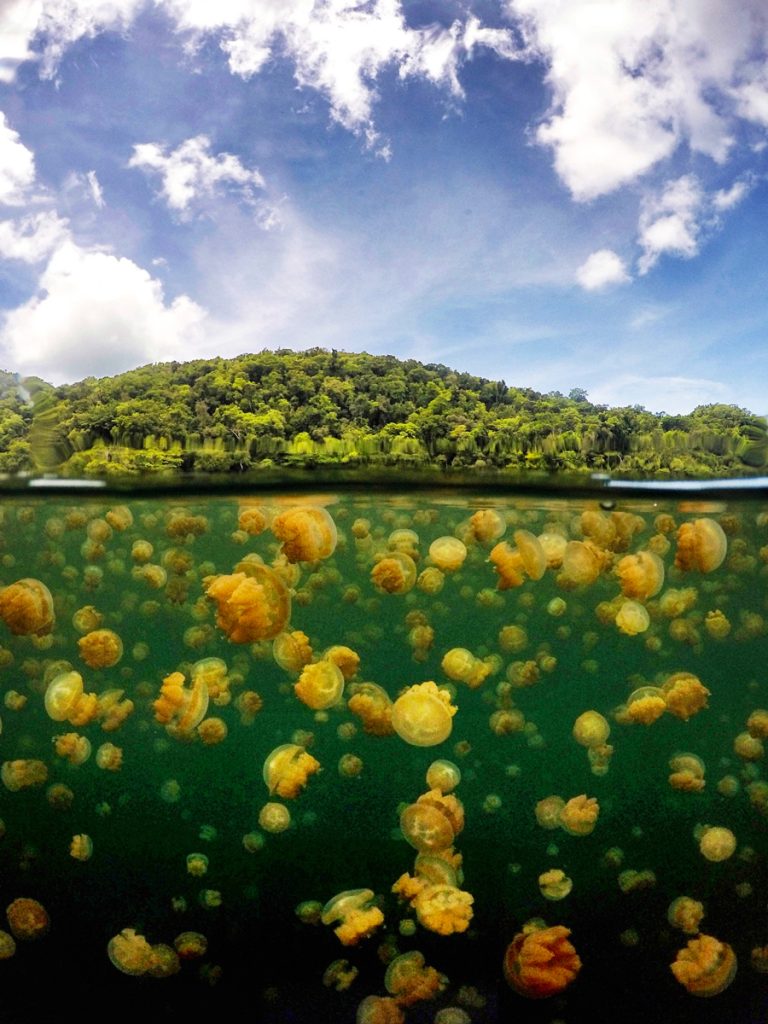
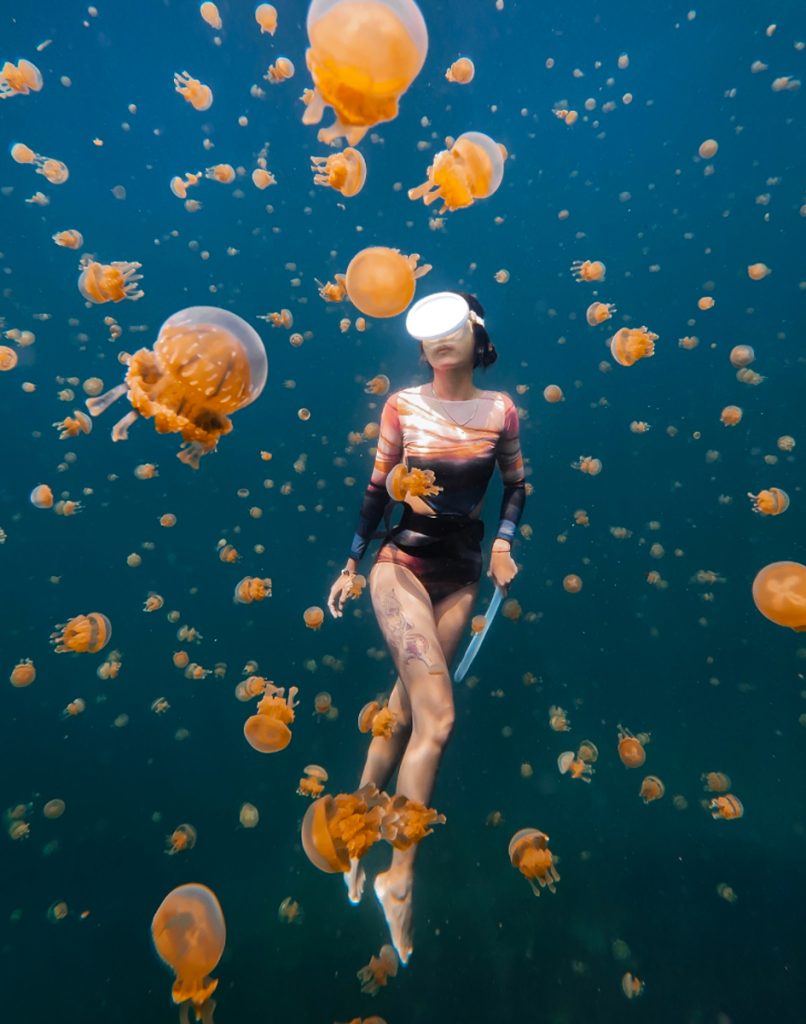
The lake was closed for several years to allow recovery from environmental stress, underscoring Palau’s deep commitment to preservation. Its reopening now serves as a reminder that conservation and wonder can coexist when nature is given time to heal.
Nature & Outdoors
In Palau, nature is not an attraction—it’s a force of identity. The islands exist in perfect equilibrium, balancing verdant rainforest with coral gardens and luminous lagoons. Every inch of Palau feels alive, from mangrove roots to manta wings.

- Rock Islands Southern Lagoon (UNESCO World Heritage Site) – Over 400 mushroom-shaped islets surrounded by crystal lagoons and teeming coral gardens.
- Blue Corner – One of the world’s top dive sites, famed for manta rays, reef sharks, and schooling barracuda.
- Ngermid Bay Mangroves – Explore hidden channels where mangroves nurture marine life and protect the coastline.
- Ngeruktabel Island – Ideal for kayaking through limestone coves and emerald lagoons.

Palau’s commitment to conservation is remarkable—its entire ocean territory is designated as a marine sanctuary. Snorkelers drift above kaleidoscopic coral, while birdwatchers trace frigatebirds and sea eagles soaring through the tropical sky.
Food & Dining
Palauan cuisine tells a story of the sea—flavors shaped by tides, coral, and trade. Influences from Japan, the Philippines, and the West meet island-grown produce in a cuisine that feels both familiar and new.

- Elilai Restaurant & Bar – Elegant dining overlooking Koror’s island vista, offering fresh seafood and tropical flavors.
- The Taj – Serving Indian and Palauan fusion dishes with ocean views.
- Carp Restaurant – A long-standing favorite known for Japanese-influenced island cuisine.
Seafood dominates most menus—tuna, reef fish, lobster—served fresh from the morning catch. - Drop Off Bar & Grill – A lively local spot for sushi, tuna poke, and sunset cocktails.
- Sakura Restaurant – A cozy Japanese eatery in the heart of Koror, known for its fresh sashimi, creative rolls, and warm island-style service
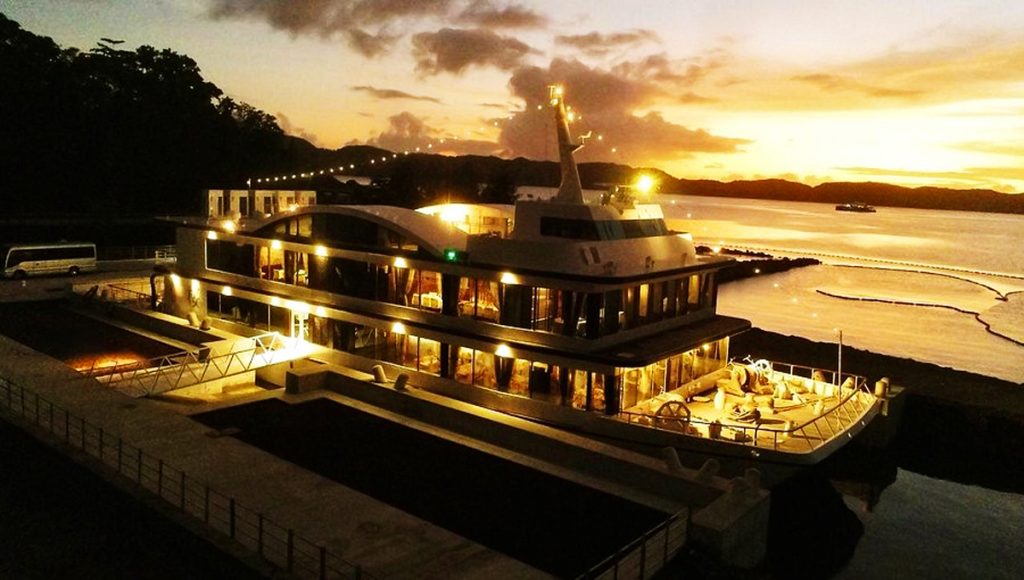
Don’t miss taro root, breadfruit, and tapioca pudding, each a reminder of Palau’s deep connection to land and sea. Meals here are unhurried and celebratory, best enjoyed under a glowing Pacific sunset.
Where to Stay
Palau offers accommodations for every kind of traveler, from secluded five-star retreats surrounded by coral reefs to eco-friendly island lodges where the sound of waves replaces the hum of city life. Whether you seek indulgence, adventure, or a quiet connection with nature, each stay reflects the spirit of the islands—warm, genuine, and deeply tied to the sea.

- Luxury – Palau Pacific Resort – Palau’s premier oceanfront resort, the Palau Pacific Resort exudes barefoot elegance. Set along a private coral-fringed beach, it offers overwater bungalows, infinity pools, and world-class dining overlooking the lagoon. Perfect for couples and luxury seekers, it blends tropical beauty with five-star refinement.
- Mid-Range – Palau Central Hotel – Ideally located in the heart of Koror, this contemporary hotel balances comfort and convenience with understated style. Guests enjoy spacious rooms, modern amenities, and easy access to restaurants, dive shops, and island tours—a welcoming hub for travelers exploring Palau’s highlights.
- Budget – DW Motel – A friendly, family-run favorite for divers and backpackers, DW Motel provides clean, cozy rooms at excellent value. The atmosphere is relaxed and sociable, with local hosts eager to share insider tips on the best reefs, hidden lagoons, and authentic dining spots around Koror.
- Boutique – Palau Carolines Resort – Located near Koror, this resort offers a serene boutique feel with limited rooms, lush gardens, and direct beach access. Guests highlight its peaceful ambiance, comfortable room design, and stunning sunset views across the water.

Day Trips & Excursions
Every journey in Palau feels like a voyage of discovery. Day trips reveal the island’s contrasts—from peaceful lagoons to historical battlefields reclaimed by nature.
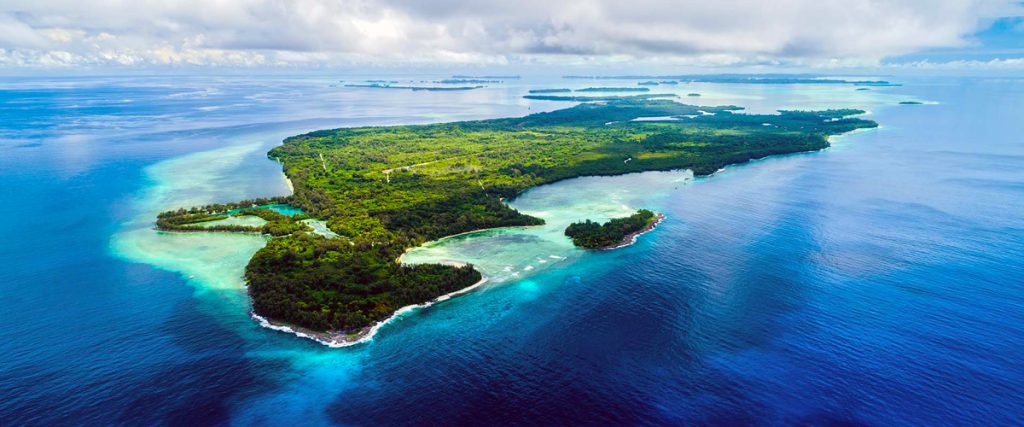
- Peleliu Island – A hauntingly beautiful WWII battlefield site now reclaimed by jungle.
- Rock Islands Tour – Snorkel, kayak, and explore the limestone labyrinth.
- Long Beach Sandbar – A shimmering strip of sand that appears only at low tide.
- Helmet Wreck Dive – Explore a Japanese shipwreck adorned with coral and sea life.

Each day trip in Palau feels like an expedition—one moment you’re gliding through turquoise lagoons, the next you’re diving through living coral cathedrals. Local guides bring history to life with stories of wartime resilience, ancient navigation, and ecological harmony.
Practical Tips
Palau’s remoteness is part of its charm, but thoughtful preparation ensures a smooth and meaningful visit. Respect for local customs and nature goes hand-in-hand with exploration here.
- Best Time to Visit: November to April offers the calmest seas and clearest diving conditions.
- Currency: US Dollar (USD).
- Language: Palauan and English are widely spoken.
- Getting Around: Boat transfers and small flights connect the islands; kayaking is popular for lagoon exploration.
- Respect Nature: Avoid touching coral, and use reef-safe sunscreen to protect marine ecosystems.
Travelers should pack light, breathable clothing and prepare for frequent water excursions. Permits are required for some lagoons and dive sites, ensuring responsible tourism that sustains the archipelago’s pristine environment.
Summary
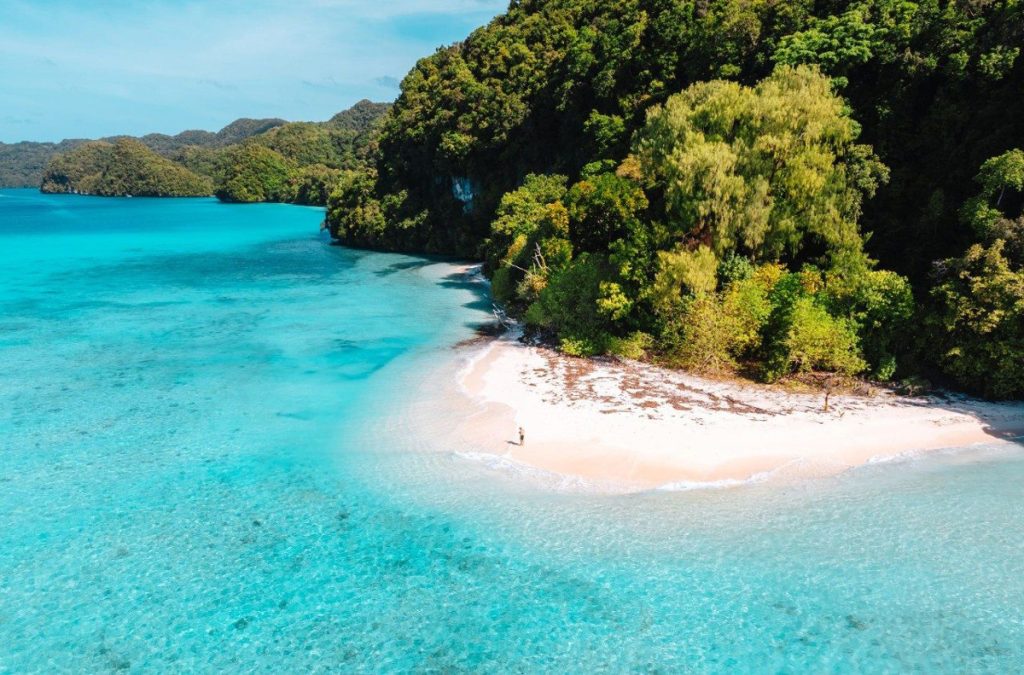
Palau is not just a destination—it’s a revelation. Its lagoons shimmer with an otherworldly calm, its culture hums with ancient wisdom, and its people embody a rare harmony between tradition and nature. Here, each sunrise over the Pacific feels like a reminder of how untouched beauty can still exist—and how deeply it must be cherished.
For those seeking balance, solitude, and meaning, Palau offers a blueprint for paradise preserved—an island nation where the ocean writes poetry in every wave. Its legacy lies not in luxury or fame, but in the purity of its spirit and the quiet power of its seas.


